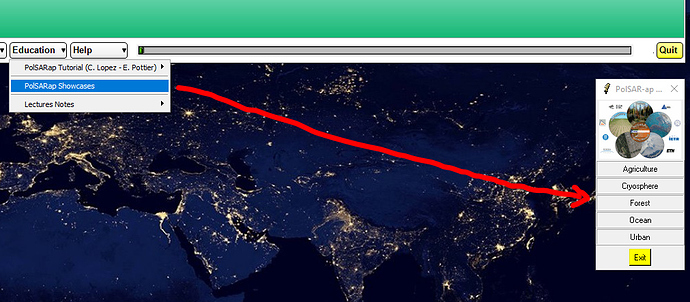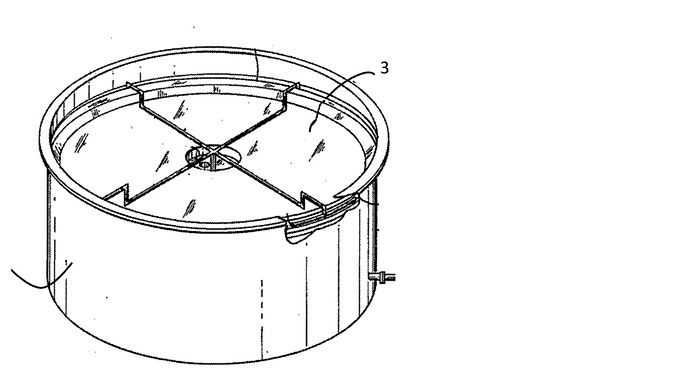Two questions: (1) Is it possible to estimate volume of stockpiles wheat, coal etc using inSAR and (2) if so could this be done with S1 data as it becomes available or would I need to wait until the precise orbital corrections were available.
Thanks
The derivation of volumes (of forests, crops,…) is mostly based on Interferometric Polarimetry. Sentinel-1 has good interferometric capabilities, but is limited by its two polarizations (VV/VH).
You can have a look at PolSARpro, especially the tutorials which guide you though a number of use cases:
But I don’t know if they also work with dual-pol data.
Thank you very much for this help and greatly appreciated. I tried SLC using VV and about a third of the stock pile had coherence > 0.5. What would be the smallest coherence acceptable in your opinion?
Thanks again!
I really can’t tell in general, sorry.
Are you aware of any published research that analyses coherence and accuracy/reliability of line-of sight displacement?
Thanks
I’m sorry, I thought you wanted to estimate volumes? I don’t see the link to displacement.
Sorry, I was not clear. I want to estimate change in volume of stockpile. I would use kriging or some other spatial modeling technique to interpolate missing areas where coherence is < 0.5.
The change in volume is probably not a coherenc process and I am not sure if you can measure that with InSAR at all. It could work if the backscatter characteristics of the surface remain the same and the change is only gradually.
My understanding is that if the coherence for a specific pixel is high (e.g. 0.9) then the displacement value is accurate. I am assuming that two SLC separated by about a week are used for the analysis. If this is the case then I assume that all pixels on the stockpile with similarly high coherence will have accurate displacement values. Each of these pixels would have a volume due to change associated with it. Interpolating displacements for pixels in missing areas and summing volume changes for all pixels in the stockpile would give an estimate of net change in volume of the stockpile. Perhaps I am missing something fundamental because of my limited understanding of inSAR.
Forgot to add… I am not interested in absolute change in volume because displacement is line-of-sight but rather an index of change in volume.
your assumptions are correct. Maybe I have falsely interpreted/translated the word “stockpile”. Do you have an example (link or image) and what kind of volume change you expect?
That is a relief to hear I am on the right track. Based on our discussion I will follow through with the example I am testing to the final image output that shows “indicative” volume change for the stockpile with missing areas filled in using kriging. I am not sure how large the volume change might be until I complete the test case. When you say link I assume it is a link to a (e.g.) Google drive tif?
Thanks again - much appreciated.
no, simply an image or description of a stockpile as you understand it. There are many translations for the word into my language so I’m not even sure we talk about the same thing 
Hello @bglong11, if I understand correctly, you want to monitor volumes of piles of coal or other materials, what is often called a stockpile in English, with repeat-pass InSAR by Sentinel-1. When material is added or subtracted from a pile, then the surface will be completely altered and the interferometric coherence will be essentially zero and there will be no useful phase measurement. Due to the estimation bias for coherence, the estimates will be greater than zero, but still low. If you want to measure volumes of piles of loose material, you need single-pass (bistatic) InSAR, such as the TerraSAR-X and TanDEM-X bistatic images. These can measure the surface topography on each date and you can subtract those to see volume changes.
Very clear explanation and thanks!
Hi @bglong11, I’m sort of doing a research on the same track. Do you have any updates regarding your study? I’m interested about your revised methodology.
I have not pursued this further although it would be interesting to run a test and check how repeat pass Sentinel-1 coherence behaves over time on a coal stockpile. @EJFielding makes a powerful case against the use of S1 for monitoring coal stockpiles.
Dear All, I am wanting to measure volume changes of a very large (50 meters diameter) storage tank. The tank is shaped like a cylinder, with a flat roof that moves up and down inside the cylinder as liquid is added or removed. This is like the stockpile problem, except the tank keeps a more organized shape, so I am hoping the SAR coherence is better than a stockpile. Are there any suggestions on the approach? Perhaps Sentinel-1 could provide a series of DEM’s, and the volume change could be estimated by difference? Thank you in advance!
there are probably extreme height differences between the top of the tank and the surrounding ground.
I see no reliable way to unwrap this discontinuity, also the (probably metal) material of the tanks could cause strong signal artefacts. Plus, there might be geometric distortions.
Did you have a look at Sentinel-1 interferograms of such tanks?
You have to consider that SLC data has a spatial resolution of 5x20 meters, so you probably are left with two pixels.
Coherence could be worth a try, as long as you have some reference information which helps you to determine volume changes at a certain point. Like this, you could check if there is loss of coherence after a certain movement of the top.
Coherent change-detection might still be worth a try.

